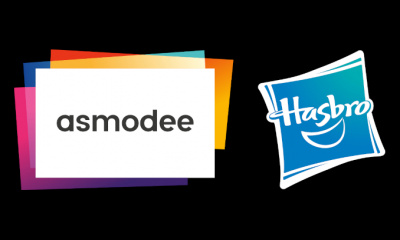 Some Assembly Required is a bi-weekly column by political consultant Brett Schenker of the website Graphic Policy. This week, Schenker talks about how to use the data available on potential customers.
Some Assembly Required is a bi-weekly column by political consultant Brett Schenker of the website Graphic Policy. This week, Schenker talks about how to use the data available on potential customers.In my last column (see "What Gets Measured Gets Done"), I explained three different examples of data sets that as a business you can take advantage of: your Facebook fan page statistics, using the Facebook advertising platform, and third, collecting email addresses and purchasing data. Now the question is, why is all of this important and how would you use that?
Why is data important?
Obviously general sales data is important. You need to know what’s selling, at what rate and if it’s profitable. The data I’ve been referring to in past columns, this column, and many columns to come, is consumer data. It’s the "who" to it all. By knowing who is buying, or reading, or playing your products, you’ll be able to find more folks like that. You’ll be able to better focus your advertising, or outreach, focusing in on the people or groups most likely to be interested in your products. You’ll better spend advertising dollars and use your time and energy to find those people. That’s a better return on investment than just generally spending money, time and effort.
That’s the secret of politics that I mentioned briefly some articles ago. Campaigns are data-driven businesses where we prioritize who we talk to and analyze who supports us. By doing that, we ignore those who we’d never get to be interested; maximizing our effort in the limited time we have (the election season or the life of an advocacy campaign).
How would I use this data?
For this column, I just want to get you thinking and we’ll start with the simplicity that is email for the "how." When it comes to online communications, email is still the most powerful tool out there. An email address unlocks data you can use, since you can append consumer data to it and learn more about your audience at the individual level. You can also use their past purchases to better target them in the future.
I was talking to a marketer recently and they mentioned how they were having trouble selling women’s t-shirts. It was clear in the discussion that specific marketing wasn’t being done to this. This is a perfect example of how data and marketing comes together. By appending consumer data to their email list they could send specific emails to the female members of their list, specifically highlighting the women’s t-shirts, even offering a percent off. By knowing who is married or has a daughter, with the holidays approaching, you could market a gift message to those men on the list. On social networks, advertising could be bought, or a post targeted to those same sorts of groups.
By doing the above, you get your message in front of those who most likely are to purchase. Your open rates will be higher than a general blast. By doing this, you will be less likely to alienate those not interested, which might cause them to unsubscribe, complain or tune out from future messages.
A recent Wallstreet Journal article talked about the value of an email address to bands. It gave various examples, like a fan of Arcade Fire who gives them his or her email address has a lifetime average spend of $6.26, while Umphrey’s McGee fans generate $32.96. While that might not seem like a lot, the article discusses that the more creative the items sold, the higher the return.
So think about your email list. Are you maximizing your messaging? What’s the average lifetime spend of an email address? Are you even messaging or collecting emails? If you answered "no" or "don’t know" to any of those questions, you have work to do. And with the holidays coming up and an increase of customers to your store or website, now is the best time to start putting some of these practices in place.
In the next article, I’ll start looking at some of these demographic statistics and how to further use them.
-- Brett Schenker: A video game playing, comic book reading, pop culture loving political consultant, Schenker runs the website Graphic Policy which mixes comics & politics and works day to day in the political realm. You can follow him on Twitter at @bhschenker or @graphicpolicy
The opinions expressed in this column are solely those of the writer, and do not necessarily reflect the views of the editorial staff of ICv2.com.







